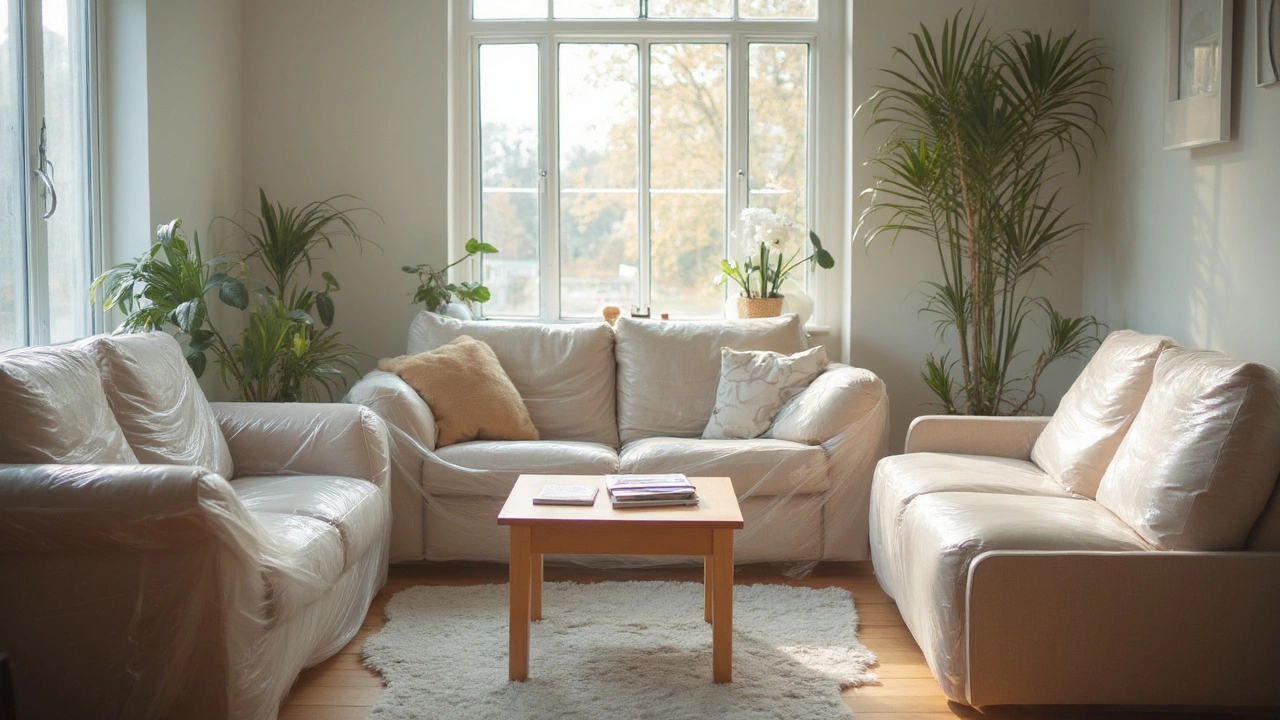Shrink Wrapping: Simple Steps to Protect Your Furniture
If you’ve ever tried to move a sofa or a wooden table, you know how easy scratches and dust can ruin a piece. Shrink wrapping is a cheap, fast way to keep your furniture safe during transport, storage, or even while you’re painting a room. In this guide we’ll cover why shrink wrapping works, which materials are best, and how to apply the film without a fuss.
Why Choose Shrink Wrapping?
First off, shrink wrap creates a tight, waterproof seal that stops dust, moisture, and scratches from reaching the surface. The film stretches around the item and then shrinks when heat is applied, hugging every curve. This means you get full coverage without bulky blankets or tape.
It’s also lightweight. A roll of shrink wrap takes up far less space than bubble wrap or moving blankets, so you can store more rolls in the garage. For people who care about the planet, many brands now offer recyclable or biodegradable shrink films that break down faster than traditional plastic.
Another perk is speed. With a heat gun or a simple hair dryer, you can finish wrapping a large armchair in under five minutes. That’s a huge time saver when you’re juggling multiple pieces of furniture.
How to Apply Shrink Wrap Correctly
Here’s a step‑by‑step plan that works for most furniture:
1. Clean the surface. Wipe away dust and any grime. A clean surface lets the film cling better and prevents dirt from being sealed in.
2. Measure and cut. Lay the roll on a flat surface and cut a piece that’s at least three times the height of the item. Overlap the ends by a few inches so the seal stays strong.
3. Wrap loosely. Slip the film around the piece and pull it snug but not tight. You want a little slack for the heat to tighten the film later.
4. Secure the ends. Use a few pieces of packing tape to hold the film in place. This prevents it from sliding while you apply heat.
5. Apply heat. Hold a heat gun a few inches away and move it back and‑forth across the film. The material will shrink and tighten around the furniture. Keep the gun moving to avoid melting the plastic.
6. Check for gaps. After shrinking, run your hand over the surface. If you see any loose spots, re‑heat that area until it seals fully.
For larger items like a dining table, you might need two people—one to hold the film and the other to guide the heat gun. If you don’t have a heat gun, a high‑wattage hair dryer can do the job, although it may take a little longer.
When you’re done, label the wrapped package with “Fragile” or “This Side Up” if needed. Even though shrink wrap protects against scratches, it won’t stop heavy impacts, so handle the item with care.
Using shrink wrap for your Rustic Social furniture not only keeps the pieces looking fresh but also shows you care about sustainable packaging. Choose a recyclable film, follow the steps above, and you’ll have protected furniture ready for any move or storage situation.
Is Shrink Wrapping Furniture Worth It? Pros, Costs, and What to Expect
Thinking about shrink wrapping your furniture before storing it? This article breaks down what shrink wrapping really does, how it stacks up against other storage options, and what it’ll actually cost you. You’ll find out the types of furniture that benefit most, common mistakes to avoid, and a few tips if you want to try it yourself. By the end, you’ll know if shrink wrapping is actually worth it for your stuff—or if you’re better off with something else. No fluff, just the facts you need.
More
